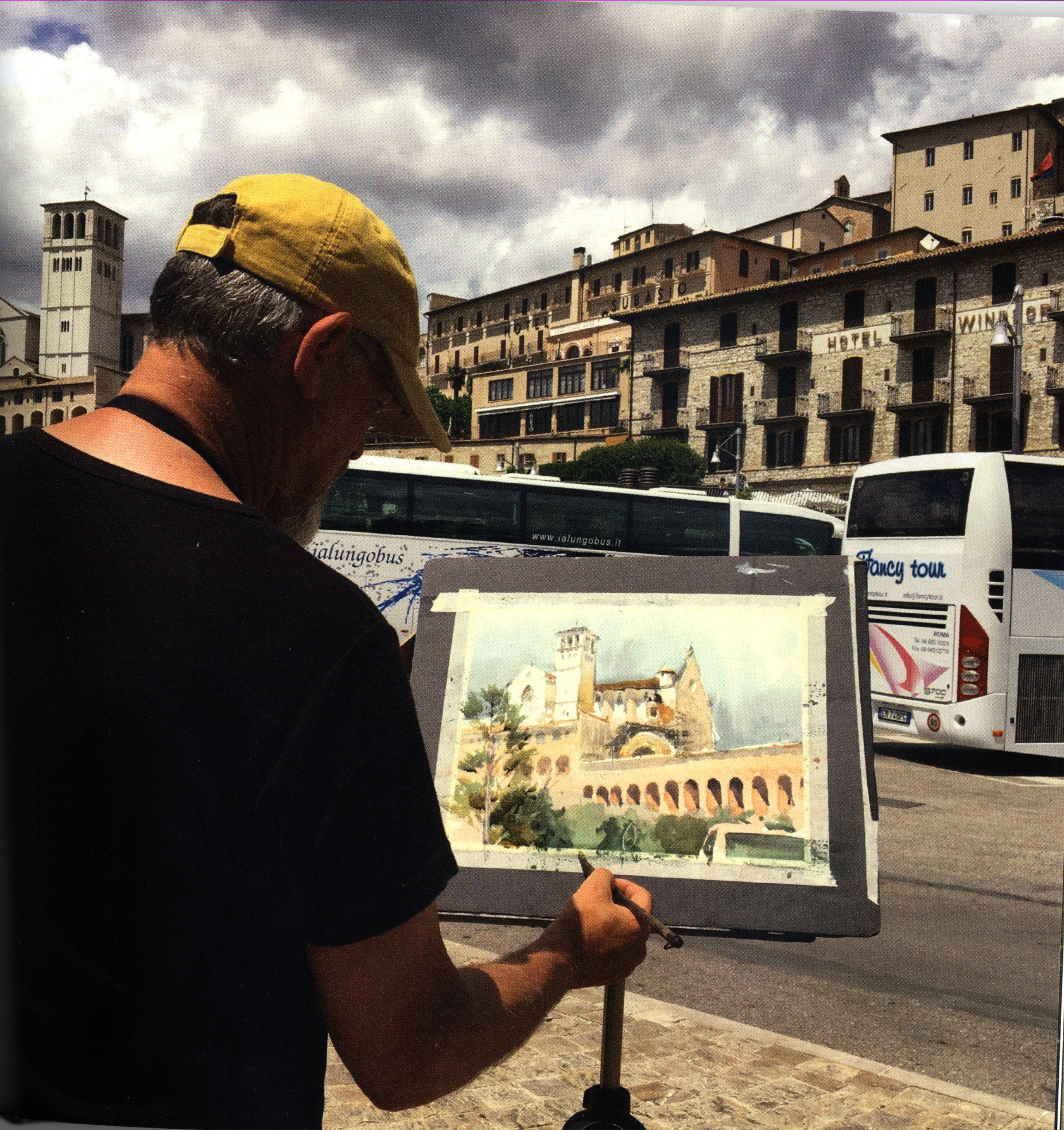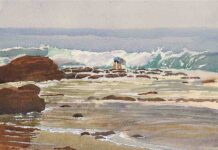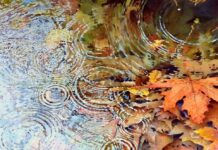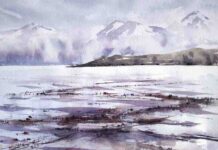“It seems I’ve spent most of my life traveling from one place to another,” says Stewart White. “To save my memories, I sketched … a lot. Before long, I was taking a small watercolor kit with me everywhere. Besides its obvious conveniences (water, water, everywhere), it’s portable and, the best part, it dries quickly. I find that atmosphere can be created with just one stroke of a brush and the right amount of water. Working wet-into-wet, I can paint an entire crowd of people at one go. To me, it’s the most obvious of all media for painting outside.

“As easy as I find watercolor to paint with en plein air, it does present certain challenges. My oil painting friends wouldn’t give a second thought to hitting a 24 x 36-inch or larger canvas, but I don’t often tackle anything large on location. It’s too annoying to have to keep spraying the paper to slow down the drying time.

“I think the biggest challenge beginners have with watercolor is keeping the work fresh and clean. It takes confidence; it just does. Overworking areas and trying to paint over areas are usually a recipe for disaster. To help, I came up with a sort of negative tip anagram, D.O.N.T.
- Don’t Dilute. Weak paintings are a result of not using enough paint.
- Don’t Overwork. You have to learn to recognize when it’s time to stop.
- Don’t Nullify. Know the mark you want to make before you make it. And once it’s made, don’t try to erase it; it just gets muddy otherwise. Watercolor reveals everything.
- Don’t Try to fix it. If a brush hair gets in the wash, leave it be. Fussing with an area only makes it worse.
“To make the best use of watercolor’s unique qualities, I would encourage painters to look for a balance between achieving representation and celebrating the playful, unpredictable nature of the medium. Aim for the point at which the abstract qualities of the subject combine with your drawing skills to create a magical illusion of light and solid form. The purpose of watercolor painting is not to copy nature but to recreate the fleeting impression of being outdoors and enjoying the spectacle of nature.”








